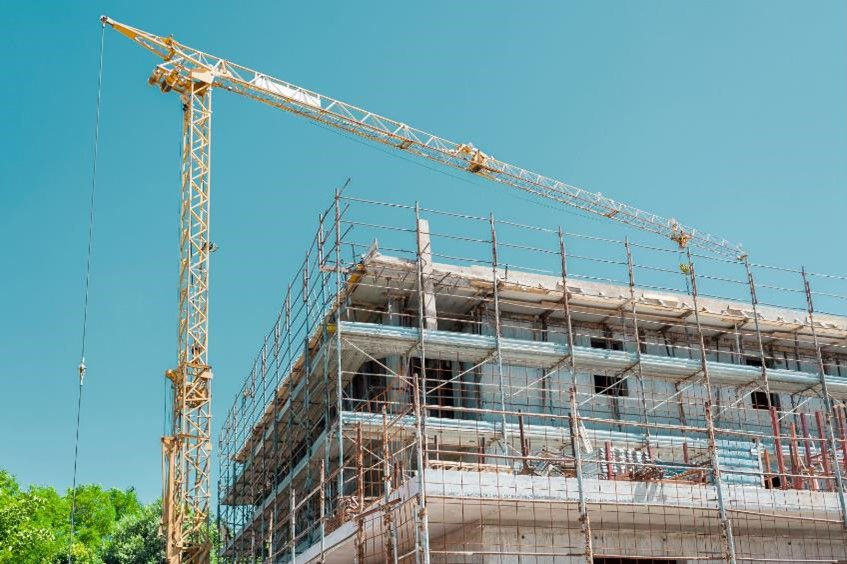BNG Public Consultation, Reducing Microplastics Use, Natural Capital Investment Planning
- eftec

- May 29
- 4 min read
In This Month's Newsletter:
Biodiversity Net Gain: Public Consultation
Our initial response & links to past and upcoming eftec analysis
Reducing Dependence on Microplastics
Appraisal of Reduction Options for Defra
Developing a Natural Capital Investment Plan
For the Turks & Caicos Islands
Biodiversity Net Gain: Public Consultation
Our initial response & links to past and upcoming eftec analysis

Back in 2021, we worked with Defra to model the expected size and dynamics of the terrestrial market for biodiversity units (BUs) and their prices in England under Biodiversity Net Gain (BNG) legislation. This study helped inform the implementation of BNG and has since been used by several organisations to model BNG demand, including its recent use in the House of Commons Environmental Audit Committee’s report on the role of natural capital in the green economy. You can read our project summary here.
Yesterday, the government announced their interest in easing and simplifying BNG requirements for small and medium housing developments. Simultaneously, they have launched a consultation on BNG requirements for small, medium, and brownfield developments as well as on nationally significant infrastructure projects. Both consultations close at 11:59PM on 24th July.
At eftec, we recognise that sufficient and affordable housing is a highly important social and economic goal, as is supporting SMEs. However, blaming environmental policy for inhibiting these goals is unhelpful and limits discussion of other solutions.
Planning regulations and environmental policy should not be adjusted by the size of the housing project alone: project design and location are equally important to the environmental and societal impacts of new developments. Restrictions based on development size could enable more significant cumulative impacts if developers shift towards greater numbers of smaller developments.
eftec recently developed the appraisal guidance (ENHAT) used by Homes England to assess the environmental impacts of new housing (link), and a tool to aid practitioners in conducting those assessments (link). We have shown in this work that building homes to improved standards and with good spatial planning (for example, prioritising brownfield development) can create win-win scenarios for people and nature with reduced costs to homeowners and renters. On the other hand, development of homes without making these considerations can exacerbate many challenges faced by people and nature in the UK, including water stress, flooding, and biodiversity collapse.
We are continuing our work to build the evidence base for applications of BNG and planning approaches that safeguard nature, enable economic growth, and support long-term wellbeing. We hope to share this work with you soon to support you in offering your views to this government consultation.
Reducing Our Dependence on Microplastics
Appraisal of Reduction Options, for Defra

Microplastics are intentionally added to products to provide a characteristic or function; for example, as a shock absorber used on artificial turf sports pitches – one of the main uses in the UK. Our work for Defra contributed to improving the understanding of potential socio-economic, environmental, and human health impacts of the use of such intentionally added microplastics and different policy options that could control their emissions.
With support from UKCEH, we conducted extensive stakeholder engagement across key sectors, compiled UK-specific data on the use and release of microplastics, and completed a full socio-economic analysis of six risk management options over a 20-year period (2024-2043).
We estimated that:
Around 160,000 tonnes of intentionally added microplastics will be used in the UK over the next 20 years, with around 50,000 tonnes emitted into the environment.
The four largest emitting sectors would be: synthetic sports surfaces, detergents and maintenance products, the oil and gas sector, and cosmetics.
Agricultural soils receive the highest volumes of emissions, primarily due to sewage sludge application, while urban soils and freshwater environments show the highest exposure and relative risk.
The analysis concluded that no risk management options clearly outperform the others, revealing trade-offs between cost effectiveness and successful microplastic reductions. For more information on our approach and how each option scores, and access to the report, view our project summary here.
Developing a Natural Capital Investment Plan
For the Turks and Caicos Islands

Building on recent work by JNCC and the EU’s RESEMBID Programme, eftec and Finance Earth collaborated with Turks and Caicos Islands (TCI) stakeholders to create a Natural Capital Investment Plan, identifying nature-based income opportunities and building local capacity to attract investment.
The project identified the potential for investment in natural capital while supporting sustainable livelihoods in TCI, shortlisted financial approaches that align with national goals and give strong social and environmental returns, developed a prioritised list of finance opportunities, and supported practical delivery of these opportunities through targeted training and stakeholder engagement.
eftec led the scoping phase of the project: conducting literature reviews, natural capital asset mapping, and synthesising business attitude survey results collected in the previous phase of the project. Together with Finance Earth, we also conducted 31 additional interviews with business representatives in TCI.
The near-term opportunities that we identify to align economic growth with environmental goals include tourism-related fees, local business diversification, and improvements in monitoring, enforcement, and awareness to attract investment in nature.
For our full project summary and access to the report, click here.




Comments